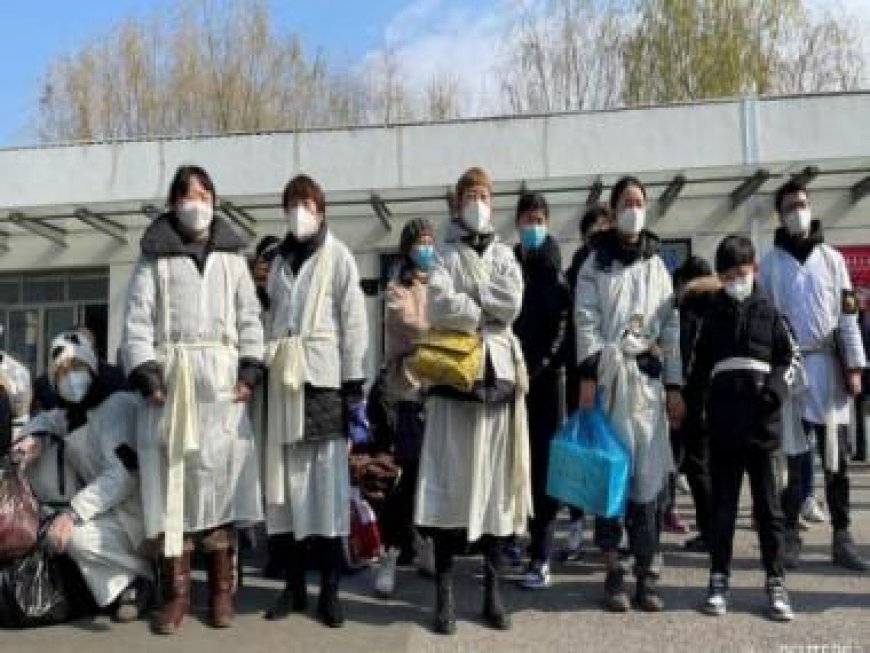China: Economic decline, COVID-19 may have reduced population in 2023
China: Economic decline, COVID-19 may have reduced population in 2023

After the country abruptly ended severe lockdowns, there was likely a spike in COVID-related deaths in 2023, which caused China’s population to decline for a second consecutive year. Meanwhile, low birth rates are maintained by low trust in the country’s economic prospects.
According to population figures released on January 17, demographers predict that fewer babies will be born in 2023 than in 2022—9,56 million—because persistent problems including high childcare expenses and gender inequalities will not be adequately addressed. Since 2016, China’s birth rate has been falling.
The desire to have children was further stifled, youth unemployment reached all-time highs, salaries for white-collar and civil servant jobs declined, and the property sector—where more than two thirds of household wealth is invested—saw a worsening crisis.
The figures will heighten worries that the growth possibilities of the second-largest economy in the world are dwindling as a result of a decline in workers and customers, and that the costs associated with retirement benefits and senior care are placing more pressure on indebted local governments.
Since Beijing abruptly lifted prohibitions in December 2022, the COVID-19 virus spread throughout China’s 1.41 billion people early last year, and demographers predict a substantial increase in the country’s death toll.
The World Health Organization received reports from China totaling 121,889 COVID deaths, the majority of which would have happened after the limitations were removed. Beijing was criticized by the UN committee for underreporting deaths, a claim that the government has consistently refuted.
Suspicion regarding China’s data openness was stoked by overcrowded crematoriums and pressure on physicians not to identify deaths as COVID-related. A 70% increase in cremations was reported in January-March of last year in Zhejiang province, China, which is home to 5% of the nation’s population. This was an unusual development last July. Since then, the data has been removed.
A study conducted by the Fred Hutchinson Cancer Center in Seattle showed that among Chinese adults over 30, between December 2022 and January 2023, there will be 1.87 million more deaths from all causes than would typically be predicted.
The population loss may be underreported in next week’s numbers, according to University of Michigan demographer Zhou Yun, in an attempt to downplay the severity of the COVID-19 effect and foster hope.
The population decline coincides with China’s struggles related to an aging population. By 2035, there will be more people over 60 than there are inhabitants in the United States, with the number of persons over 60 predicted to surpass 400 million. Currently, there are about 280 million people over 60.
Demographers attribute factors that discourage women from having children, such as gender discrimination and expectations that they take on the role of caregiver in the family, in addition to poor earnings and significant job instability.
Women should share “good family tradition stories,” according to President Xi Jinping, who also stated that in order to “actively cultivate a new culture of marriage and childbearing,” which he related to national growth, this must be done.
In an effort to promote childbirth, local governments have launched a number of initiatives, such as lengthier maternity leaves, tax discounts, and housing assistance.
The 2022 marriage rate decline to its lowest level since 1979 is one set of data suggesting decreased birth rates in 2023. In China, where the majority of unmarried women do not have access to benefits related to childrearing, marriage is considered a leading indication of births.
As the COVID backlog cleared, marriages are predicted to have increased year over year in 2023, according to official media. However, demographers stated that this would not be sufficient to allay long-term worries about China’s aging and declining population.
According to official media, China’s fertility rate fell from 1.3 in 2020 to a record-low 1.09 in 2022. Along with other economies from East Asia, it is among the lowest in the world.
The Yuwa Population Research institute called on policymakers to “urgently” reverse a fall in newborns by providing significant family subsidies in a policy paper published in December.
“The most worthwhile investment in China today is children,” it said.
(With agency inputs)
What's Your Reaction?



























































